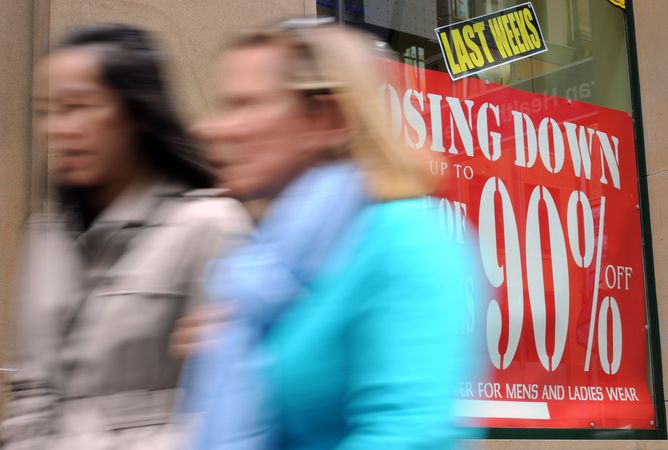
By Doug Stephens
If you’re a retailer, you may not be sleeping very well these days and that’s understandable. Tectonic shifts in demographics, economics, technology and media all seem to be conspiring against traditional retail business models and paradigms. Big brands are closing stores, malls are shuttering and consumer spending is increasingly going online, laying waste to power centers and main street merchants alike. But while all of this is true, it is also a time of unique opportunity to reimagine, reinvent and reinvigorate one’s retail business.
So, here is our short-list of crises that are likely keeping you up at night and with each, some thoughts on things you might do now to help you sleep a lot more soundly.
Crisis: You Will Replace Your Staff With Technology
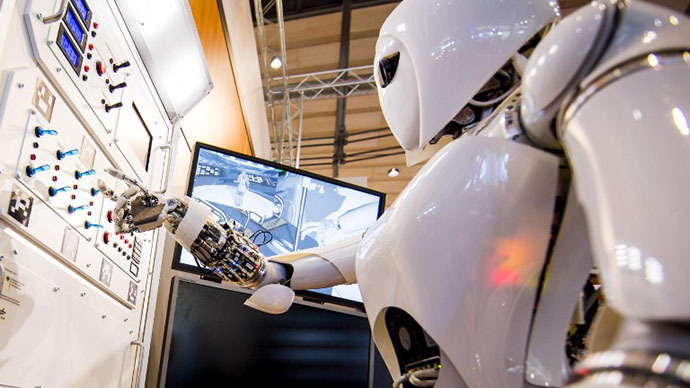
A recent paper by academics Carl Frey and Michael Osborne affirmed what many have already felt intuitively; that up to 47% of jobs in the United States are at high risk of being replaced by technology within a decade or two. And these vulnerable professions are no longer restricted to manual or menial labor but have evolved to encompass knowledge and skill-based work. Chief among the expected casualties are retail salespersons, with an estimated 92% likelihood of being automated through combinations of machine learning systems and robotics. And despite some historical cases of a correlating increase in new jobs springing out of these sorts of technological advancements, there’s no empirical evidence of net employment increases. To put it plainly, your company is very likely going to substantially reduce the number of humans you employ.
Opportunity: Rethink Your Customer Experience
If your automation efforts are solely aimed at efficiency and cost reduction, you’ve missed the point. This historic shift also offers a chance to completely re-evaluate the important strategic role of human staff within your customer experience and in doing so, elevate the total brand experience. Online clothing retailer Zappos, for example, while only transacting about 25 percent of its sales via phone order, invests disproportionately in hiring, training, rewarding and retaining the most talented and culturally attuned staff it can find for these critical customer service positions. So, if routine, data-heavy or repetitive tasks are better performed by technology, what new, higher order opportunities exist for your best and brightest staff? Where can outstanding people add a new level of rapport, empathy, humanity and delight to the customer’s experience?
Crisis: Continued Ecommerce Growth Will Force Store Closures
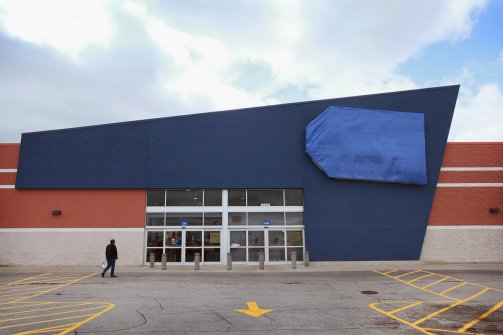
Although ecommerce is still a relatively small percentage of the total retail market, its global pace of growth is close to 20% year on year. For example, in the first quarter of 2014, Amazon.com registered 23% revenue growth while the retail market in general remained virtually stagnant. So, should ecommerce growth continue unabated (and there’s little to suggest that it won’t) it’s conceivable that by 2025, upwards of 30 percent of all retail purchases could be made online.
Adding to this likelihood is the growing universe of connected devices or the “internet of everything” as it’s often called. The number of connected devices is expected to grow from roughly 5 billion today to over 50 billion a decade from now and include not only familiar things, like computers and mobile devices but also sensors, appliances, automobiles, wearable and possibly even ingestible devices. Each of these new devices has the potential to act as another unique consumer in an ever-expanding digital retail universe.
This persistent and pervasive growth of ecommerce will inevitably cause many retailers to question the declining productivity of their physical stores, resulting in massive closures. By some estimates, as much as 15 percent of malls will be shuttered in the coming decade as retailers redeploy the costs of managing physical assets into their online businesses, or simply go bankrupt.
Opportunity: Reimagine The Strategic Value of Stores
Despite the extraordinary growth of ecommerce, physical stores remain the best, if not the only place shoppers can have powerful physical and sensorial experiences with your brand (at least for now). So, rather than simply downsizing your stores begin instead by right-sizing your customer experience. Imagine stores not as distribution centers but as live-action pieces of media that speak to the brand’s unique and remarkable attributes, fostering a lasting, kinetic and emotional connection with shoppers. Spend the energy necessary to design and articulate the complete customer experience in-store. Then stop measuring store productivity solely on the basis of sales and profit and begin leveraging a new generation of offline analytic tools to better quantify the experiential value of your stores.
Physical stores also provide a network of shipping and pickup points in the market to offer fast turn-around on online orders. Burberry for example, has experienced stronger online sales growth than it has in-store but that hasn’t deterred it from investing heavily in developing the brand’s in-store experience as well as honing its “click and collect” service.
Crisis: People Will 3D Print What You Make
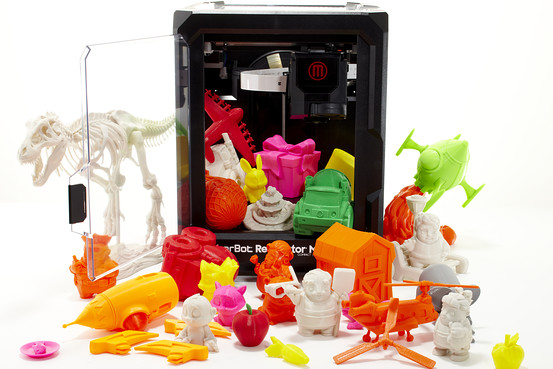
Remember how the desktop printer and publishing software decimated the commercial printing industry? Well, depending on what you sell, your customers may very soon be able to quite casually download and print what you make in their homes. The cost of a good, consumer-grade 3D printer has rapidly scaled to under $2,000 and is surprisingly simple to use. In fact, Wall Street Journal tech columnist Geoffrey Fowler recently wrote that owning a 3D printer was like having an “infinite dollar store on your desktop.” Bad news if you’re a dollar store but equally bad if you retail household items, home décor, toys or replacement parts. The bottom list is that this new consumer capability represents a category five hurricane for retailers of all kinds.
Opportunity: Reinvent Your Business Model
Consider that while the record industry was suing teenagers for copyright infringement, Apple was building iTunes and in the process, forever altering how music was bought and sold. So, while 3D printing may threaten a percentage of your sales, it may also represent an opportunity for you to innovate a new business model for the products you sell? For example, Toy manufacturer Hasbro recently announced a joint project with 3D printing company Shapeways called SuperFanArt.com, whereby select artists will create unique versions of trademarked Hasbro designs, which fans can then order and Shapeways will print. It’s a completely new take on toy manufacturing and an entirely new business model for Hasbro.
Crisis: People Will Share What You Sell
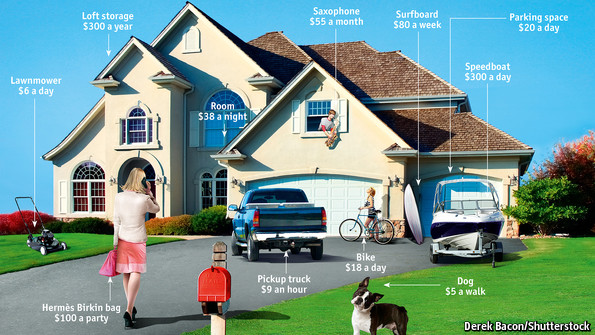
It’s estimated that vacation rental-sharing network Airbnb will book more nights in rooms this year than Hilton Hotels. Not bad for a company that’s just over 6 years old. More importantly, this sharing phenomenon is now spreading across just about every imaginable category of goods and services from household items and cars to private jets and people who perform a range of tasks. In 2013, revenues within the sharing economy were estimated to be $3.5 billion and growing at 25% each year. And it’s happening for a multitude of reasons, some of which are purely economic – with people looking for less expensive alternatives to ownership. But it’s also happening because it can, because we have reached a point of connectedness where this scale of sharing is possible. And while players in the sharing economy like Airbnb make very cogent cases for the positive net impacts of sharing, others argue the correlating impact of sharing on the incumbents in a category – like established hotel chains. So, whether you’re a car rental company, hotel brand, hard goods retailer or anyone else trying to sell something that can otherwise be shared, you’re going to face a choice, as the level of collaborative consumption increases; accept a loss of sales, fight your customer’s right to share or find a way to participate and benefit from this new economic sector. Sharing is here to stay.
Opportunity: Facilitate The Sharing Of What You Sell
Outdoor clothing manufacturer Patagonia recently shocked industry analysts when it not only ran an ad campaign encouraging consumers to re-use, repair and resell their existing Patagonia clothing but also created the online marketplace to facilitate the sale of used clothing between customers. Did it adversely impact sales? No, just the opposite; sales of new Patagonia merchandise increased by 16% following the campaign. It would appear that the brand’s willingness to lose sales in order to do the right thing was rewarded by its customers.
Crisis: You Will Be Forced To Tell The Truth

Recently, a food blogger, Vani Hari A.K.A. FoodBabe.com, made news when she posted an article revealing that because beer is not overseen by the Food and Drug Administration, brewing companies are consequently exempt from having to publish the ingredients in their beer. She went further to suggest that some of the chemicals and additives that could legally be used in beer are, let’s just say, less than appetizing. Within a couple of days of Hari’s post, both Anheuser-Busch and Miller-Coors both publicly posted the ingredients in some of their most popular products, much to the amazement of analysts. In essence, a blogger with significant online influence, made lap dogs of two of the brewing industry’s largest players.
Instances like this are becoming the norm and call for an entirely new level of openness and honesty from companies. It simply won’t be practical or profitable to keep sensitive truths from the public. What you make, how you make it, who you hire and how you treat employees – even your company’s political leanings, are all becoming readily available information via a host of online sites and mobile apps. There simply are no secrets anymore and if there are, they’re liabilities in waiting.
Opportunity: Turn Honesty Into A Competitive Advantage
Explore the aspects of your product, company or industry that have traditionally been obfuscated or held from public view and the risks and liability associated with those things eventually being discovered and thrust into the spotlight of public awareness. Now consider the potential upside to your brand in being proactively transparent on such issues. For example, while many companies in the food industry either defend, deny or hide their use of genetically modified organisms (GMO’s), fast food outlet Chipotle made the decision to begin listing the GMO ingredients in its menu for all to see. The motivation, according to Chipotle was to build greater trust with their customers through honesty – which it appears to have done.
This is also a time to examine your organizational communications practices with respect to how you receive and respond to inquiries, complaints and criticism and how these instances can be better handled to improve existing customer satisfaction and even draw new customers to your brand. Inventory your organizational skills at communicating quickly and openly in social channels.
Survival Of The Fastest
So, while the current onslaught of change provides plenty to be concerned about, it also brings enormous opportunity for those retailers with the courage to challenge industry, category and corporate beliefs. Some will use their energy to defend the past, while others dedicate it to pioneering the future. As with any evolution, survival is not linked to size or strength but to adaptability and the inherent willingness to change and change quickly.

